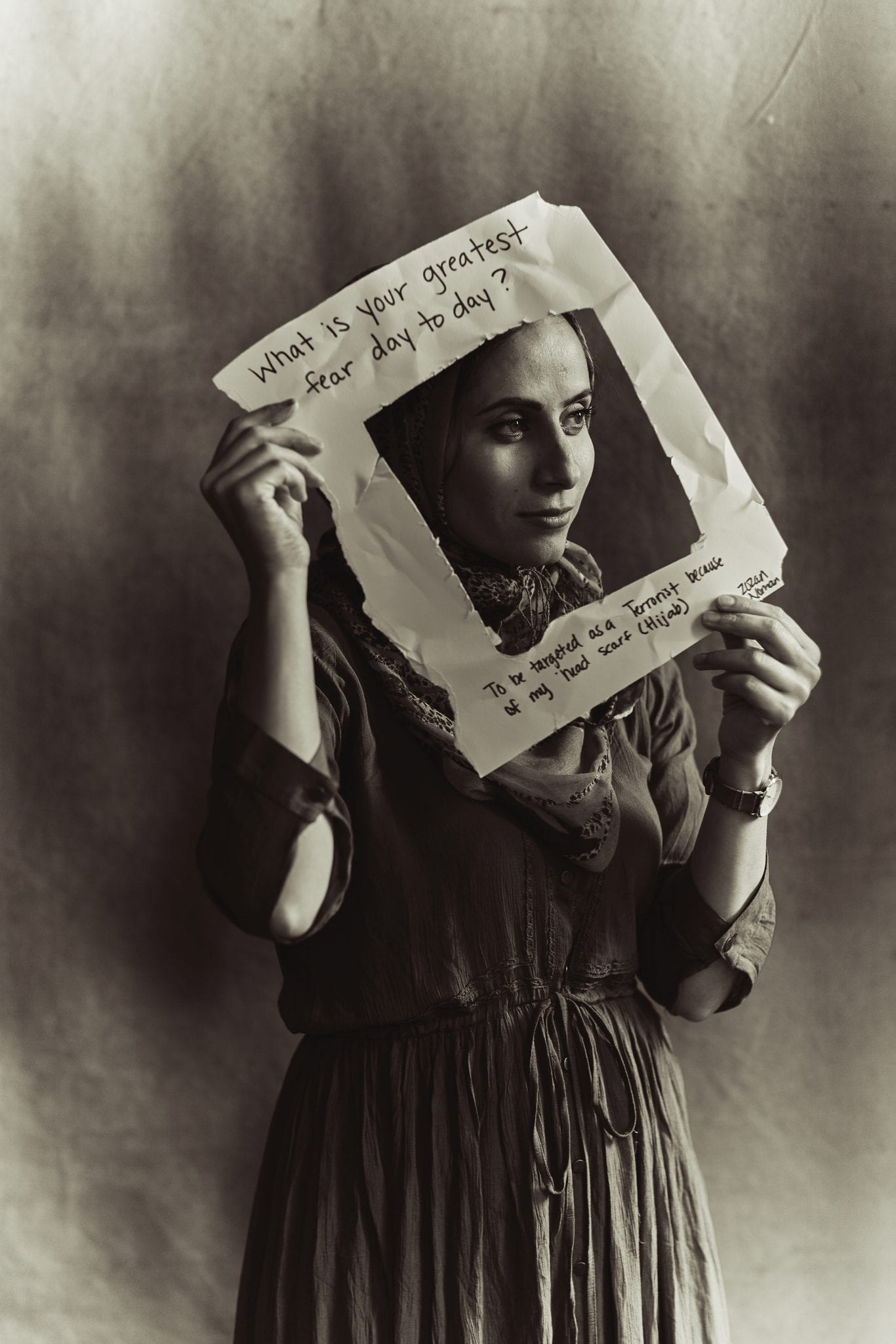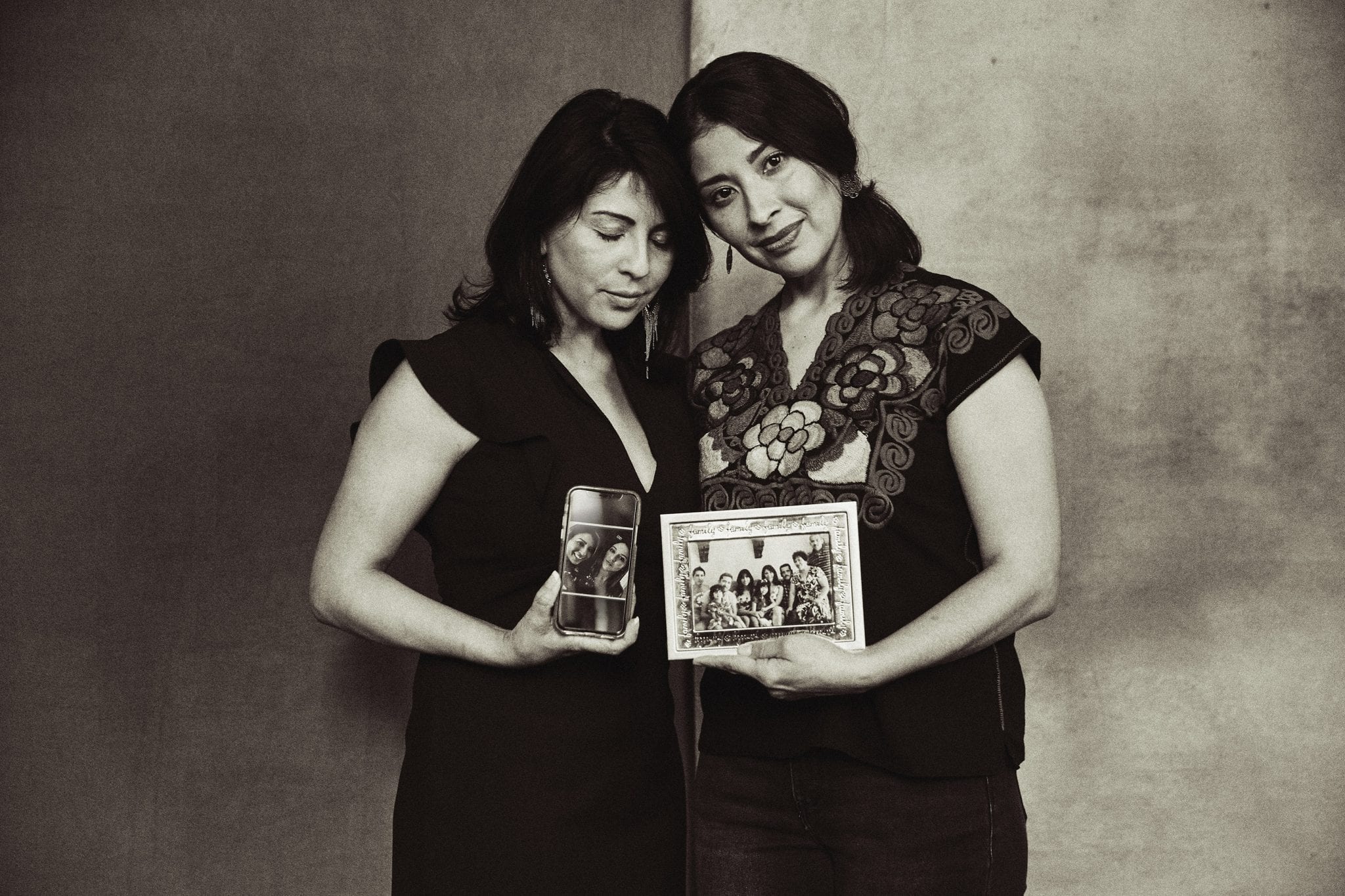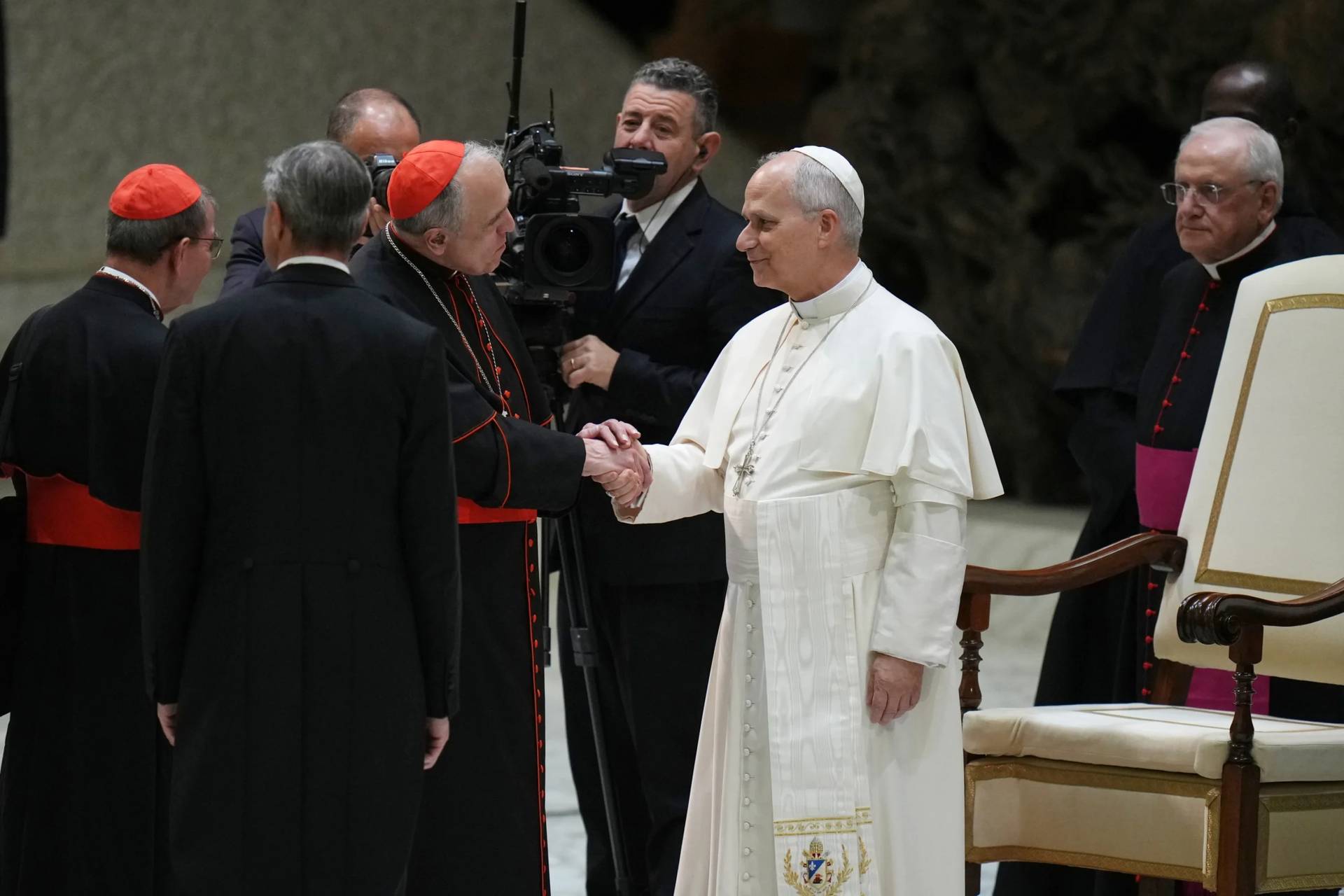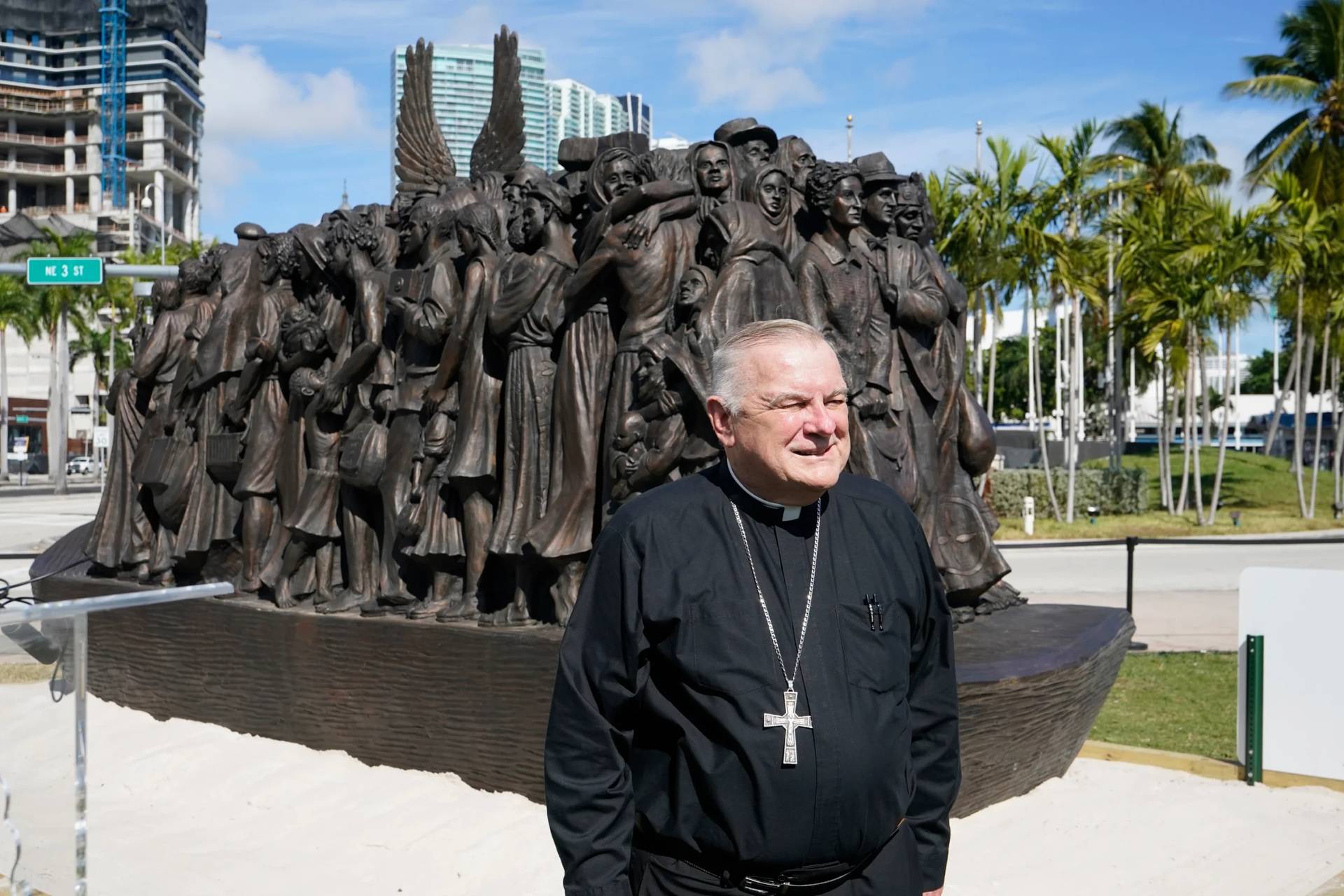ROME — In a video message two years ago marking the 35th anniversary of the Jesuit Refugee Service welcome center in Rome, Pope Francis spoke directly to refugees and said “Each one of you refugees who knock on our doors has the face of God and is the body of Christ.”
Today, on World Refugee Day, a new campaign launched by Catholic Relief Services (CRS) — “Be Unafraid: A Traveling Exhibit of Faces and Voices” — aims to capture that human face, not only of the refugee, but also of those who have expressed fear or concern about welcoming the stranger.
Their hope is that by capturing both differences and commonalities, viewers of the exhibit — which will travel on a mobile truck around Baltimore, Maryland — will discover a shared humanity.
While the means of display may be unconventional, the scenario of a refugee meeting hostility or suspicion is all too familiar, and organizers of the exhibit are betting that the power of the human face can bridge the divides.

In an interview with Crux, 26-year old Jiyar Adeny, a former refugee from Kurdistan, now living in Nashville, Tennessee, spoke of how she was photographed alongside a member of her community who voiced opposition to the prospect of refugee resettlement programs.
Yet for Adeny, she was able to quickly find common ground as her interlocutor spoke to her about raising two African American sons and how she resented certain stereotypes about them, often fearing for their safety simply because of the color of their skin.
“It was just interesting because she has these boys that she’s trying to raise and she doesn’t want anyone to misjudge them based on false portrayals, but at the same time she was doing that to another group who is also being misunderstood,” she told Crux.
“We were able to effectively communicate both of our concerns,” she continued. “Her eyes were opened to a lot more and when we talked about it, she apologized and that’s kind of what I’m hoping this whole project represents.”
Adeny — who came to the United States with her family in 1993 after escaping a chemical genocide under Saddam Hussein — said she’s hoping this campaign will help folks better understand the complex situations that often drive refugees to this country.
“Like a lot of families, it wasn’t initially on our agenda to come here. We wanted to stay in our own country, but we were fleeing for safety and that’s how we came here, and that’s the case for a lot of refugees — that’s why we’re refugees,” she said.
“But,” she was quick to add, “I’m so grateful for the opportunities I’ve had.”
Reflecting back on her childhood, she said her family spent four years moving from place to place in a constant state of uncertainty and anxiety fearing for their lives.
“Everybody just left with the clothes on their back and their children and headed for refuge at the Turkish border, walking through mountains, hiding from the Iraqi militia, seeking safety,” she recalls.
“My siblings were born in caves and refugee camps. None of them were born in a hospital or with any kind of medical attention,” she said, noting that it was mere luck that she was, as a caravan took her mother to a nearby town to give birth.
Yet, when she entered the world as a malnourished infant, the doctor encouraged her mother to abandon her and let her die, and he didn’t believe she had a chance to survive.
Her mother refused, and soon thereafter, the family received sponsorship to come to the United States.

Today, Adeny and her nine siblings — and now her 14 nieces and nephews — are fully immersed in their community, both proud of their heritage but also eternally grateful to call the United States home — and that’s the story behind her face that she’s hoping others will want to discover.
“Welcoming immigrants is supposedly a foundation of this country, and at the end of the day, we’re all here for a better opportunity,” she insists.
Adeny hasn’t wasted that opportunity. Having completed her undergraduate degree in kinesiology and biology, she now works as a personal trainer, while she is working to complete her MBA.
When a friend suggested she take part in Catholic Relief Services’ exhibit, she didn’t hesitate to say yes, because as she told Crux, she’s spent her life working for the cause of her fellow refugees and sees this photo collection as another occasion in which passers-by on the street might be given a snapshot of a different perspective.
“I think that a lot of us, and a lot of the ones seeking to come to the United States, are really misunderstood and poorly represented by a small percent of bad apples that happen to get the attention of the media that’s instilled fear in other Americans,” she said.
For Jeremy Cowart, dubbed by the Huffington Post as the “Most Influential Photographer on the Internet,” taking photographs for the exhibit was an occasion “to see healing and restoration take place before our very eyes.”
“A lot of these people came in and were unsure of and nervous about refugees, and to see their opinions change after one face to face conversation was pretty remarkable and just goes to show you what needs to be happening across the country,” he told Crux.
“It’s easy to judge and form opinions based on fear and from afar, but once we sit face to face and actually ask why a refugee is trying to come here and stay here, we’re just kinder.”
The exhibit’s launch comes at a time in which Catholic leaders have issued a strong rejection of President Donald Trump’s policy of family separation at the U.S.-Mexico border and his administration’s decision not to allow refugees fleeing domestic abuse to seek asylum in the United States, and its organizers are hoping that in some way, this exhibit is yet another step in shifting public perception on this issue, that could eventually have broader public repercussions.
“The saying is that a picture is worth a thousand words, but I think when you combine it with words, it’s even more powerful — especially when you have two opposing sides coming together,” said Cowart.
“Hopefully, the exhibit will stir a conversation and get people reconsidering their already formed opinions and, hopefully, it encourages them to go meet someone of opposing beliefs and actually have a conversation face to face.”














